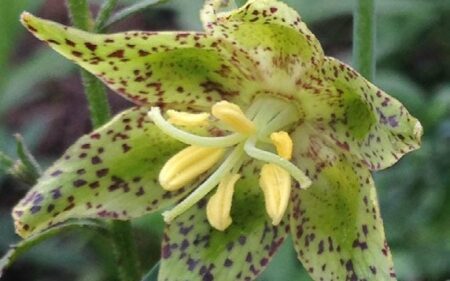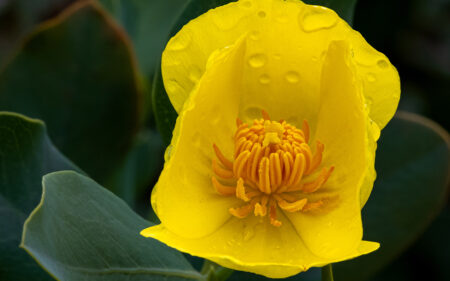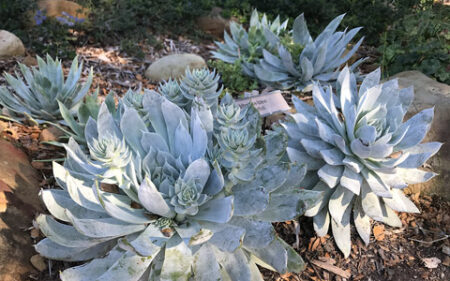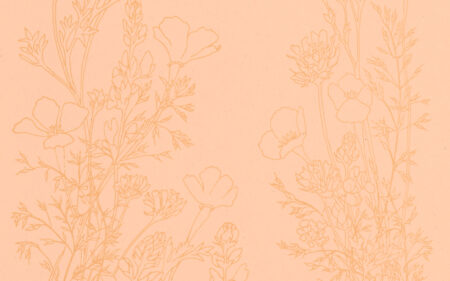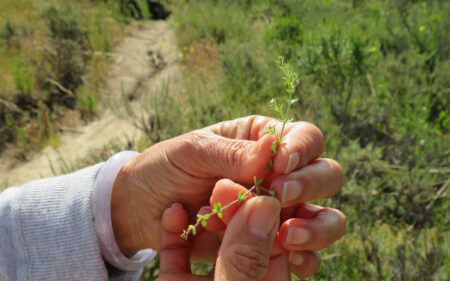Design Your Own Native Plant Garden

The first step in a good garden design is to understand what you want to get back from your garden. Do you enjoy wandering around garden paths drinking coffee in the morning? Do you want a space for outdoor entertaining? Or, is your top priority low water and low maintenance to help cut back on monthly bills? A home for wildlife? Color and beauty year-round? A native plant garden can fill more than one of these goals, but identifying and ranking your motivation for designing and investing in your garden can give clarity when you have to make some choices along the way. If you start to get nervous about questions and decisions later on in the process, just remind yourself of why you took on this gardening challenge. Remember the big picture of what you want and ask yourself how this decision will help get you closer to the goal.
Evaluate what you have

The next step in designing your garden is to look over the existing landscape and evaluate what you have. Nothing is set in stone and existing paths and patios, sheds, or pergolas all are components of the hardscape that could be changed if desired. Some hardscape components can be labor intensive and expensive to remove or install so think about these carefully. Other areas like gravel patios or mulched paths are easier to edit in or out along the way. Other big questions are if mature trees and shrubs can be integrated into the design. Mature specimens can act as anchors and help a young garden feel established, but a poorly placed, overgrown shrub can also interfere with design or in the case of some weedy exotic species, work against the goals of a native plant garden.
Draw some doodles and make some notes

Pick up your pencil and start to draw your yard from a bird’s eye view. It doesn’t have to be to scale and don’t get frustrated if you aren’t an artist. Some simple shapes can spark creativity and help understand your garden. Start with those hardscape elements and the existing plants that you want to keep. Add in new paths, seating areas, or other ideas that you want to explore. Paths should be wide enough so that you can easily access important nodes in the garden. Four feet may seem overly generous, but is comfortable for pushing a wheelbarrow or walking two people side by side. Straight paths are efficient for high traffic areas like from your front door to your driveway, but a bit of a curve can soften a path and generally look better when the garden has grown in. Draw in a hedge or shrubs to obstruct the view of air conditioner units or other less desirable features. Also, make some observations and notes about the conditions of the yard; look at light availability, where slopes exist, and soil conditions: if the soil drains freely or if water tends to puddle before slowly being absorbed into the ground. These notes will be helpful when you go to choose plants at the nursery.
Build a plant palette

With your goal and site specifics in mind, it’s time to choose a palette of plants. Starting with a simplified primary palette of around 5-7 different types of perennials and small-medium sized shrubs can be a great place to start. Clumps of these can be repeated through the landscape or grouped together to create impactful sweeps of color and texture. A common mistake may be to plant too many different plants in small patches which may be perceived as busy or messy. If you are looking for some readymade plant palettes, visit sbbg.org/plant-natives or ask about our plant lists at our retail nursery. We have several lists of plants for specific applications (for example hummingbird gardens, under oaks and dry shade, groundcovers). On top of these primary palette plants that are repeated, additional species can be added for varying interests or color at different times of the year.

If you need help choosing the right California native plants for your home garden, bring a photo of your yard, sketches, and notes and our nursery team of staff and volunteers will be happy to share some advice.


A plant can start its lifecycle here as either a seed or cutting (vegetative, or asexual propagation). We strive to create and mimic environmental conditions the plants would be adapted to in the wild. Therefore, it is of utmost importance to be in rhythm with the natural world when it comes to propagation. We collect, clean, and treat seeds according to their specific environmental and seasonal needs. As the seedlings or cuttings continue to grow, they will be transplanted, fertilized, pruned, and watered. We continue to tend the plants until they’ve reached the end of their growing cycle at the nursery and are ready for outplanting! All of this propagation work takes place on the east side of the Garden, on the hill overlooking the Pritzlaff Conservation Center.
Visit our nursery for expert advice this planting season and shop the largest selection of California natives on the Central Coast.

 Donate
Donate